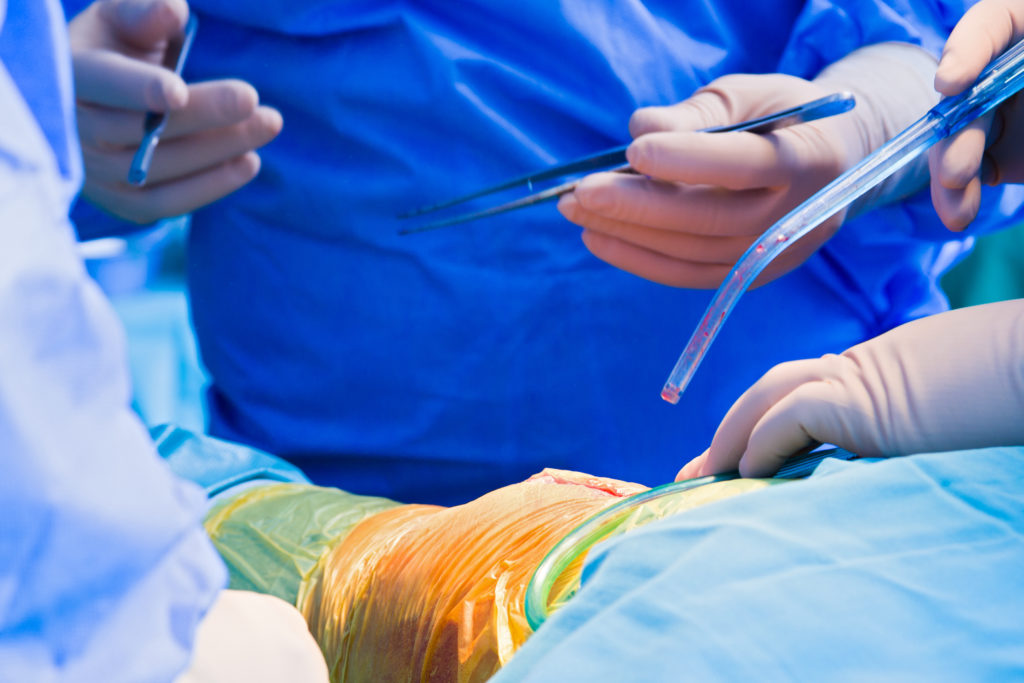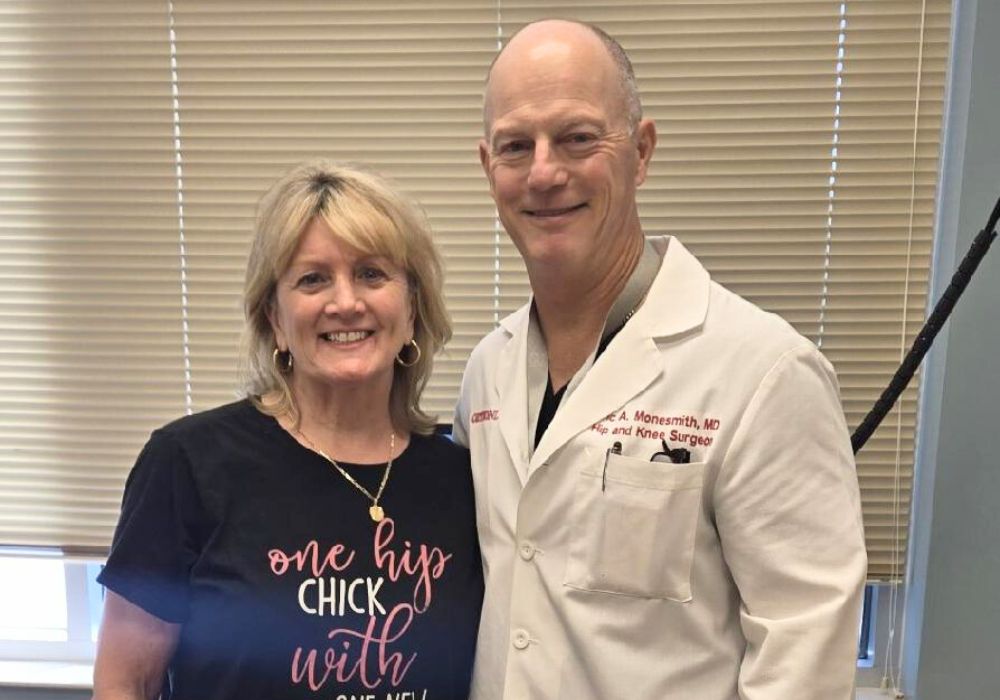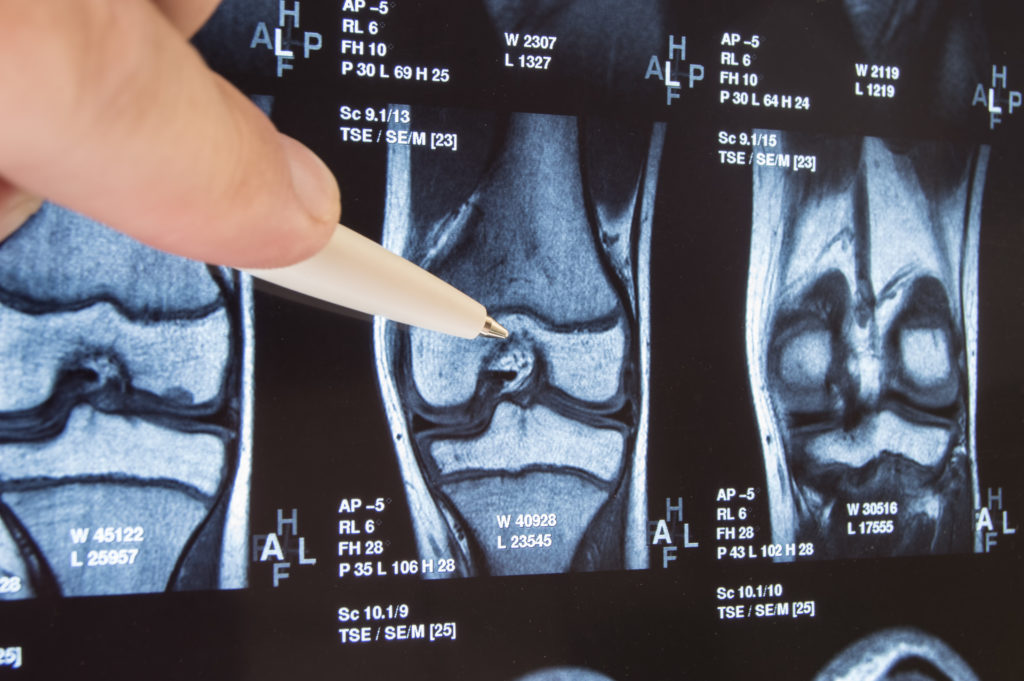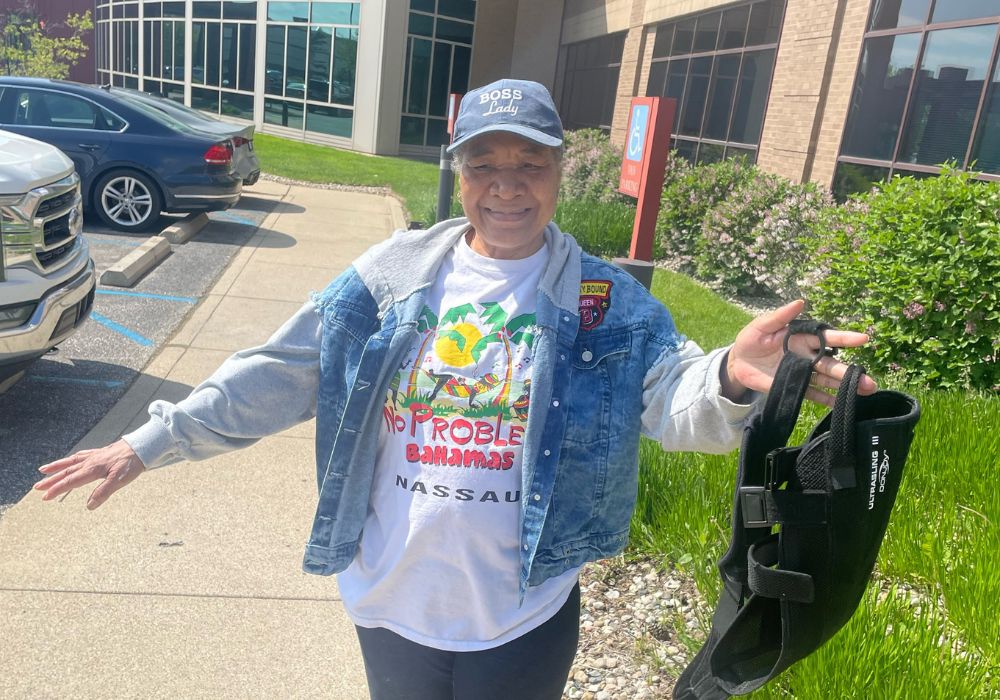This post is part of The Ultimate Guide to Total Knee Replacement
A total knee replacement may be necessary when the pain and function of your knee is not allowing you to have a great quality of life and non-surgical treatments are no longer helping you.
Read on to learn about common knee conditions and when total knee replacement can help relieve knee pain.
Anatomy of the knee
To understand why someone might need total knee replacement surgery, it helps to learn about the different parts of the knee and how they come together.
A joint is a special structure in the body where the ends of two or more bones meet. The thigh bone (femur) and the shin bone (tibia) meet to form the knee joint.
The knee cap (patella) covers and protects the front of the knee joint. The joint lining (synovium) makes fluid that lubricates the joint cartilage covering the ends of the bones. This cartilage cushions the knee for smooth, easy movement.
The knee is a major weight-bearing joint and is held together by muscles and ligaments that allow your leg to bend and straighten so that you can walk and climb stairs.
When you have knee arthritis, the cartilage wears away, causing the bones to grind together. This produces pain, loss of motion and swelling.
Causes of knee pain
The most common cause of chronic knee pain and disability is arthritis. Most knee pain is caused by one of three kinds of arthritis: osteoarthritis, rheumatoid arthritis or post-traumatic arthritis.
When pain is severe, these conditions can sometimes create the need for total knee replacement.
- Osteoarthritis: Mostly related to old age, it usually occurs in people over 50 years old, but can occur in younger people as well. The cartilage that cushions the bones of the knee softens and wears away. The bones then rub against one another causing knee pain and stiffness.
- Rheumatoid arthritis: The synovial membrane that surrounds the joint becomes inflamed and thickened. This chronic inflammation damages the cartilage and eventually causes cartilage loss, pain and stiffness in the knee. This is the most common form of a group of disorders referred to as inflammatory arthritis.
- Post-traumatic arthritis: This follows a serious knee injury. Fractures of the bones surrounding the knee or tears of the knee ligaments may damage the articular cartilage over time, causing knee pain and limiting knee function.
Physician examination
To determine if total knee replacement is right for you, your total joint specialist will ask you for a complete medical history, ask questions about your pain and how long you have been experiencing it, and conduct a physical examination. An X-ray or MRI can confirm the best treatment options.
Make an appointment with a joint replacement specialist
Total knee replacement surgery
Total knee replacement surgery involves removing the diseased portion of the knee joint and resurfacing the ends of the bones with the new prosthesis.
There are four parts to a knee prosthesis: the femoral part caps the end of the thigh bone, the tibial part caps the top of the shin bone, a bearing surface sits between these two components and another bearing surface sits underneath the kneecap.
These parts are most commonly made of metal and plastic. The metal caps the ends of the bones and the plastic functions as the new cartilage. Special instruments are used to shape the bones for an exact fit, including the use of computer navigation and robotic technology.
Surgeons who perform total knee replacement custom fit your prosthesis in the operating room as implants come in many different sizes. Implants are usually cemented to your bones.
Many knee implants function well for over 15 years, even in young active patients. Surgical technique is still critical to the success of the operation, no matter what prosthesis is used. Surgeons today better understand and appreciate the importance of ligament balance and proper surgical technique.
Perioperative pain management and rapid rehabilitation are very advanced nowadays. Today, the length of stay after a total knee replacement is usually one to two days in the hospital. Some patients can even return home safely after an overnight, 23 hour stay. Early range of motion and return to function are encouraged.
Overall, total knee replacement surgery is one of the most effective operations offered to patients today. It is reliable and durable and allows you to return to a better quality of life by decreasing your pain and improving your function.
Watch a total knee replacement surgery (warning: graphic images)
Recovery after total knee replacement
Following a total knee replacement, you may have a brace on your knee for a day until your leg wakes up from the anesthesia. Physical and occupational therapists will help you with your activities of daily living. This includes how to get to the bathroom, get dressed and go up and down steps using either a walker or crutches.
The whole goal is to help you become safe on your own so you can return home, even if you live alone; most of the time this is on the second day after total knee replacement surgery. They will also teach you a few exercises that you will continue to do after you leave the hospital.
You will do the exercises on your own. Pumping your ankles up and down is helpful in decreasing the chances of blood clots by keeping the blood moving in your legs. Tightening your thigh and buttock muscles is also helpful. You will have support stockings on both legs after surgery to help minimize swelling. Move around often after surgery.
The focus of total knee replacement recovery is getting a good range of motion and controlling your pain and swelling the first month. Then you will progress to strengthening exercises once you have a good range of motion and your pain and swelling are under control.
When can I return to normal activities?
Resumption of normal activities after total knee replacement is highly dependent on the individual patient. You should go at your own speed depending on how you feel. The first two weeks are the most difficult.
General guidelines suggest around three weeks after surgery, most patients are driving a car and using a cane to walk. Most people are able to return to a sedentary type of job at five weeks and a more physically demanding job at seven weeks after total knee replacement surgery. You can work from home whenever you feel like it.
Your leg will be swollen after surgery. Travel is restricted to within two hours of home for the first month in order to decrease the risk of developing a blood clot in your leg.
Many patients get back to activities such as walking for exercise, swimming, riding a bike and golfing by six weeks after total knee replacement surgery, even though they still have some discomfort, increased warmth and increased swelling.
You will fatigue easily and may not sleep well for the first month after total knee replacement, but this will improve with time. Patients are encouraged to increase your activities as you can tolerate. Don’t be afraid to push yourself. Many total joint surgeons ask their patients to avoid running and jumping activities after surgery as this can cause the implant to prematurely fail.
Learn more about joint replacement surgery at OrthoIndy
Schedule an appointment
Your well-being is important to us. If you have knee pain and are considering knee replacement surgery, schedule an appointment with one of our orthopedic specialists to review your options.
If your injury or condition is recent, you can walk right into one of our OrthoIndy Urgent Care locations for immediate care. For rehabilitation and physical therapy, no referral is needed to see one of our physical therapists.
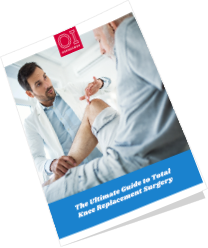
The Ultimate Guide to Knee Pain Relief
Take control of your knee pain, learn about treatment options, and find out if surgery might be able to help you get back to normal.


